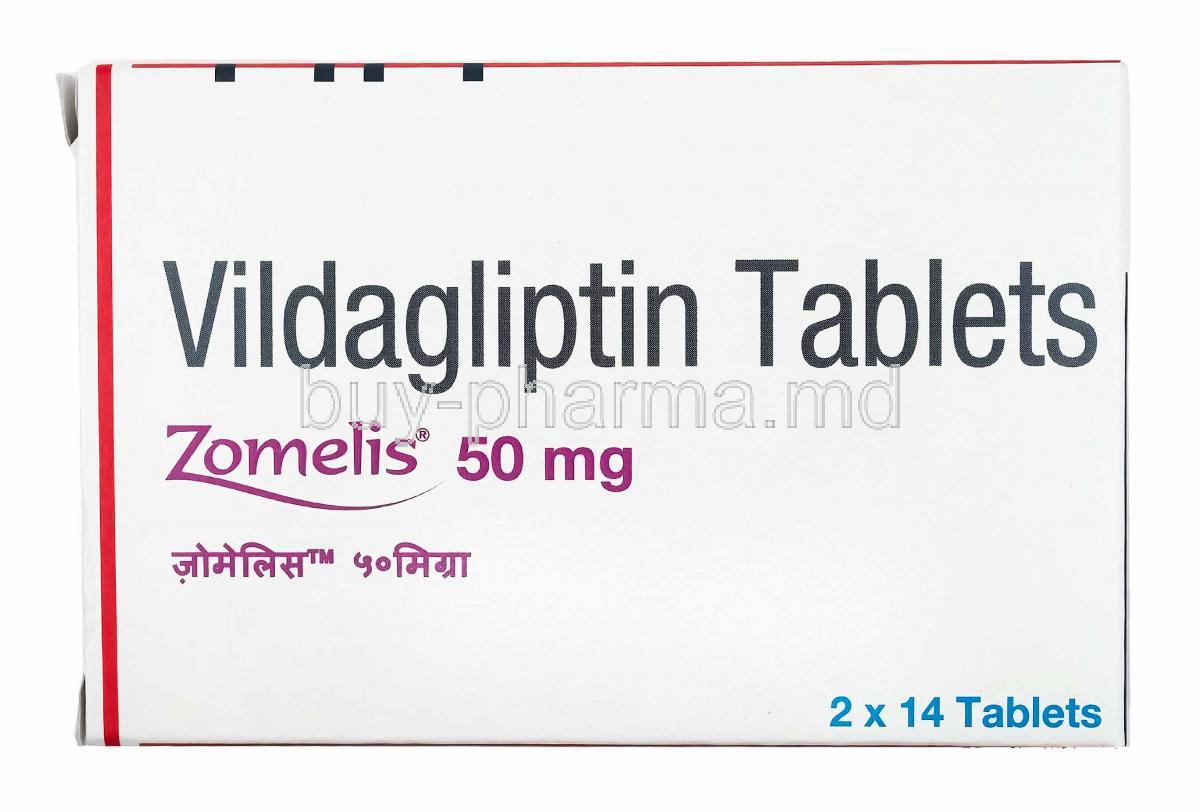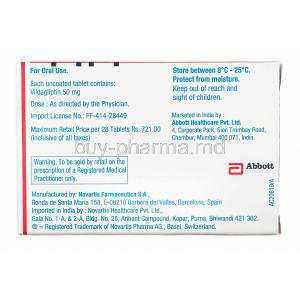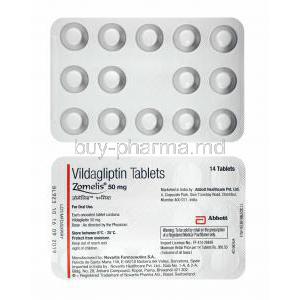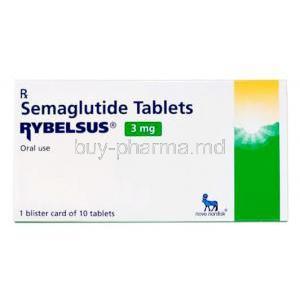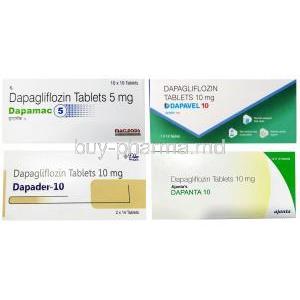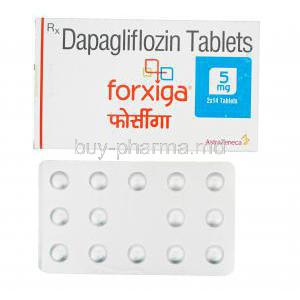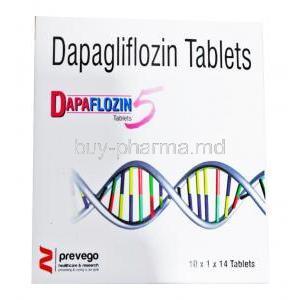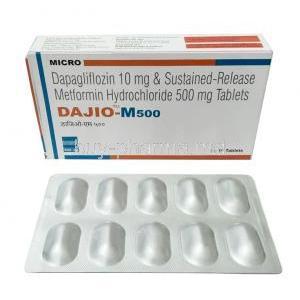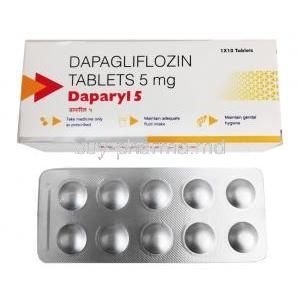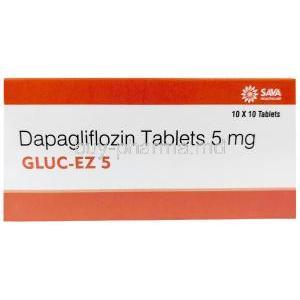Zomelis, Vildagliptin
- Introduction
- Overview of Zomelis (Vildagliptin)
- Composition
- Mechanism of Action: How Zomelis Works
- Approved Uses
- Off-Label Uses
- Vildagliptin Dosage and Administration
- Special Administration Considerations
- Overdosage and Handling Precautions
- Vildagliptin Side Effects
- Drug Interactions
- Contraindications
- Warnings and Precautions
- Careful Administration
- Important Precautions for Patients
- Storage and Stability
Introduction
Zomelis, a form of vildagliptin, is used to help manage blood sugar in people with type 2 diabetes. It works by using the body's natural processes to steadily control blood sugar without causing significant weight changes or a high risk of low blood sugar episodes. This makes it a great option for long-term metabolic treatment, often used in combination with metformin for better results.
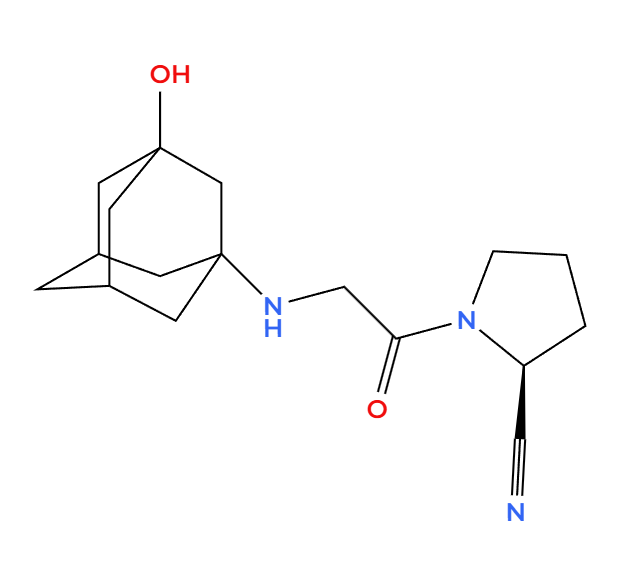
Overview of Zomelis (Vildagliptin)
Vildagliptin works by temporarily blocking the enzyme DPP-4, which helps prolong the effects of the hormones GLP-1 and GIP in your body. This helps you control blood sugar.
Zomelis is one of the brand names for vildagliptin tablets. In other places, the original brand is sold as Galvus, while the combination with metformin is sold as Galvus Met.
Regulatory approval status and brand availability
The European Medicines Agency (EMA) approved vildagliptin (marketed as Galvus) in 2007 for adults with Type 2 diabetes. However, as of 2025, it has not yet been approved by the U.S. FDA.
In India, the Zomelis brand was initially launched under a licensing agreement but is now owned by Eris Lifesciences. You can easily find Zomelis Met, a combination of vildagliptin and metformin, in pharmacies across India. Following the loss of exclusivity rights, the Indian market now has increased competition among brands like Zomelis and Zomelis Met.
Therapeutic classification and clinical importance
Vildagliptin (ATC code A10BH02) is a DPP-4 inhibitor that helps manage blood sugar by improving insulin function and regulating glucagon levels. It works based on your glucose levels, which means it lowers HbA1c without a high risk of low blood sugar. This makes it a great option for older people with irregular eating habits or those who are prone to hypoglycemia. However, it's important to have regular liver function tests, and the drug should be used with caution in patients with liver problems.

Composition
Active ingredient: Vildagliptin
Each tablet of Zomelis includes vildagliptin, as the ingredient with the label indicating a 50 mg dosage, per tablet though certain markets may offer a 100 mg option well.
Available strengths and formulations
Vildagliptin is available in single-ingredient tablets, most commonly in a 50 mg strength, but 100 mg tablets are also available in some places.
For combination therapy, fixed-dose tablets containing vildagliptin and metformin are common. These come in specific strengths:
- 50 mg of vildagliptin combined with 500 mg, 850 mg, or 1000 mg of metformin.
- The tablets are typically taken once or twice a day, depending on the patient's kidney function and tolerance.
- Some versions also use slow-release (SR) metformin, and in some areas, slow-release vildagliptin is also available.
Excipients and inactive components
The standard ingredients found in cores usually consist of anhydrous and microcrystalline cellulose along, with sodium starch glycolate and magnesium stearate as common additives for the film coating that could include hypromellose alongside iron oxides and talcum powder with macrogols and titanium dioxide being additional components, in some variations depending on the manufacturer and regulations in place.
Vildagliptin and Metformin
Combining vildagliptin and metformin is effective because they work in different ways to control blood sugar. Vildagliptin improves the body's natural hormone response, while metformin reduces the amount of glucose the liver produces and increases insulin sensitivity in the body's tissues.

Doctors usually aim for a daily dose of 100 mg of vildagliptin along with up to 2000 mg of metformin, adjusting the dose based on a patient's kidney function and how well they tolerate it. Research and real-world results show that using a fixed-dose combination of these two drugs can help patients reach their treatment goals more quickly.
It is also worth noting that metformin is particularly helpful for controlling blood sugar between meals, while vildagliptin is more effective at managing post-meal sugar spikes. Additionally, gastrointestinal issues with metformin often improve when a sustained-release version is used.
Sitagliptin vs Vildagliptin
Both sitagliptin and vildagliptin are in the same class of drugs called DPP-4 inhibitors and are effective at controlling blood sugar. However, their dosing schedules are different: sitagliptin is usually taken once a day at 100 mg, while vildagliptin is typically taken twice a day at 50 mg.
Studies show both drugs are similarly effective at lowering HbA1c, although some data suggest that vildagliptin might have a slight edge at its standard dose. A key difference is that sitagliptin is approved by the U.S. FDA, but vildagliptin is not.
The choice between these two medications often depends on factors like availability, a patient's other health conditions, and local insurance or healthcare policies.
Glimepiride Vildagliptin
Compared to the sulfonylurea drug glimepiride, vildagliptin is much less likely to cause dangerously low blood sugar (hypoglycemia). This is because vildagliptin's action is dependent on glucose levels, meaning it only boosts insulin when your blood sugar is high.
Studies show that while both drugs effectively lower HbA1c levels, vildagliptin results in far fewer cases of confirmed hypoglycemia and doesn't cause weight gain, unlike glimepiride. Although glimepiride is a powerful and cost-effective option, vildagliptin is often preferred when a primary goal is to avoid low blood sugar. In some regions, a three-drug combination of glimepiride, vildagliptin, and metformin is also available.
Mechanism of Action: How Zomelis Works
Role of DPP-4 inhibition in glucose regulation
Vildagliptin works by blocking an enzyme called DPP-4, which normally breaks down hormones known as incretins (GLP-1 and GIP). By inhibiting this enzyme, vildagliptin allows incretin levels to rise, leading to a more balanced insulin response that is based on your body's glucose levels. It also helps control glucagon, especially when blood sugar is high.
Effect on incretin hormones (GLP-1 and GIP)
By increasing the levels of GLP-1 and GIP in the body, both when you're fasting and after you eat, vildagliptin improves how your body's beta-cells respond to blood sugar. This helps the body produce a more robust and rapid insulin response, which in turn leads to better control of blood sugar spikes after meals.
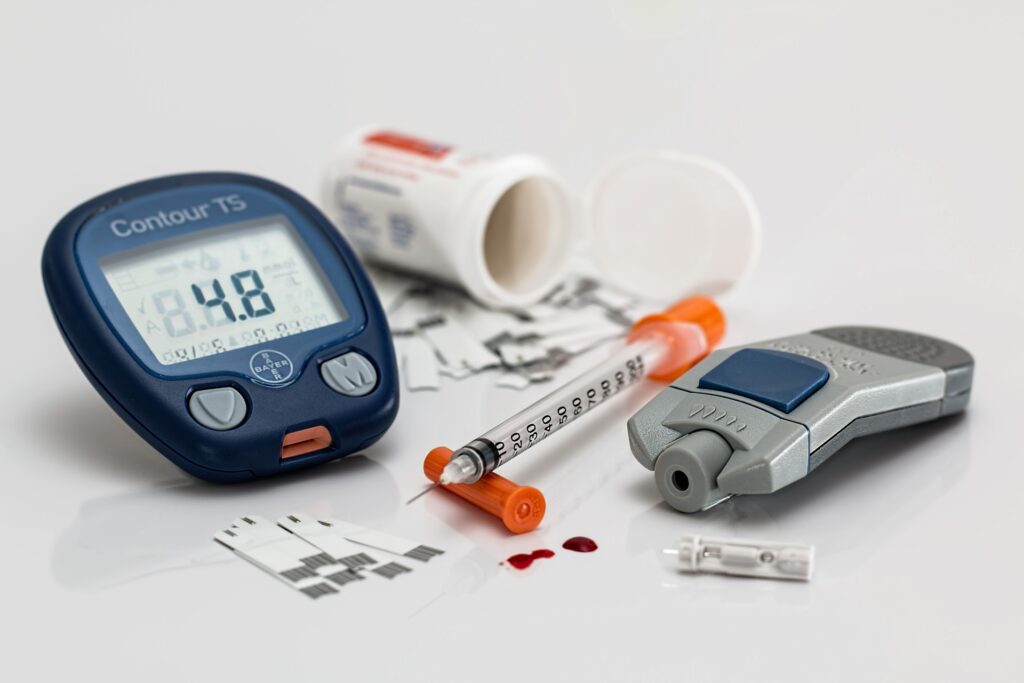
Impact on insulin secretion and glucagon suppression
As blood sugar levels rise, the body releases more insulin to prevent them from getting too high. At the same time, the release of glucagon from alpha cells is reduced. This helps lower the liver's glucose production and keeps blood sugar levels stable throughout the day.
Benefits on pancreatic beta-cell preservation
Clinical data shows that treatment with this medication improves certain markers of beta-cell function, such as HOMA-B and insulin secretion. While there isn't enough evidence to call the drug "disease-modifying," studies suggest it helps preserve beta-cell function, which aligns with its mechanism of action on incretin hormones. The medication also works well when combined with metformin treatment.
Approved Uses
Type 2 Diabetes Mellitus: Monotherapy
Zomelis, Vildagliptin is approved for adults with type 2 diabetes as a single-drug treatment when diet and exercise aren't enough. As a single therapy, it systematically lowers both fasting and post-meal blood sugar levels.
The extended-release formula improves tolerance and adherence for those who experience stomach issues with regular metformin. The medication works by decreasing the amount of glucose produced by the liver and increasing glucose absorption in the body's tissues, which leads to smoother blood sugar control throughout the day.

Combination Therapy with Metformin
For patients whose blood sugar isn't well-controlled with metformin alone, adding Zomelis, Vildagliptin can be very helpful. This combination works by using two different but complementary methods:
- Metformin lowers the amount of glucose produced by the liver and increases the body's sensitivity to insulin.
- Gliclazide, a sulfonylurea, stimulates the pancreas to release more insulin.
Together, these two medications are more effective at lowering HbA1c levels than either drug on its own. This combination also allows doctors to use lower doses of each drug, which can reduce the risk of side effects while still being highly effective.
Combination Therapy with Sulfonylureas
AlthoughZomelis, Vildagliptincontains a sulfonylurea, it can sometimes be combined with other medications to achieve better blood sugar control in specific, challenging cases. This isn't a common practice because of the increased risk of low blood sugar, but it can be an option when a patient needs specialized care. In some situations,Zomelis, Vildagliptin is used to replace other sulfonylurea medications because it offers more consistent blood sugar control and enhanced safety.
Combination Therapy with Insulin
Zomelis, Vildagliptin can be used with insulin for people with advanced type 2 diabetes who aren't responding well to oral medications alone. This dual approach helps by:
- Lowering the amount of insulin needed which can reduce the risk of weight gain and low blood sugar.
- Improving blood sugar stability by addressing both insulin resistance and the pancreas inability to produce enough insulin.
- Making the treatment more balanced and tolerable which can improve patient satisfaction.
This combined treatment is especially helpful for patients who have had diabetes for a long time and need more intensive measures to control their blood sugar.
Role in Improving Glycemic Control
The main purpose of Zomelis, Vildagliptin is to help people achieve and maintain long-term blood sugar control. It works by addressing both a lack of insulin and insulin resistance at the same time, which helps lower both your fasting blood sugar and the spikes that happen after meals.
Over time, this consistent control helps reduce the risk of long-term diabetes complications. This includes small vessel diseases (microvascular complications) like kidney damage, nerve damage, and eye problems, as well as large vessel diseases (macrovascular complications) that affect the heart and blood vessels.

Off-Label Uses
Use in Prediabetes and Impaired Glucose Tolerance
Zomelis, Vildagliptin have been studied in people with prediabetes because they can improve insulin sensitivity and reduce liver glucose production. This could help delay or even prevent the onset of type 2 diabetes.
Observations suggest that starting these medications early may help lower fasting blood sugar, stabilize post-meal spikes, and protect the pancreas's beta cells from burnout. Although this is considered an "off-label" use, it may be an option for individuals with a family history or other risk factors for diabetes to help protect their future blood sugar control.
Use in Obesity and Weight Management Studies
Studies on Zomelis, Vildagliptin have found that it can help with weight loss. The medication works in several ways: it helps control appetite, changes gut bacteria, and reduces glucose production in the liver. This effect is especially noticeable in people with insulin resistance.
Recent research also shows that Zomelis, Vildagliptin can lower triglyceride levels, which improves fat metabolism. Patients often report feeling fuller and consuming fewer calories overall.
While not a dedicated weight-loss drug, Zomelis, Vildagliptin can be an effective tool for weight management when combined with a healthy diet and regular exercise.
Use in Cardiovascular Risk Reduction Research
Research shows that metformin-based treatments like Zomelis, Vildagliptin may have benefits for heart health beyond just controlling blood sugar. It can improve the function of your blood vessels, and it also helps reduce inflammation and oxidative stress in the body. These actions can slow down the hardening of your arteries, which improves your overall heart health.
Some studies suggest that long-term use may also lead to a lower risk of heart attacks and strokes. While Zomelis, Vildagliptin isn't officially approved for reducing these cardiovascular risks, including it in a diabetes treatment plan can still improve blood vessel health and lower the chances of death in high-risk patients.
Investigational Use in Non-Diabetic Conditions
Zomelis, Vildagliptin has attracted interest beyond diabetes, with studies exploring its use in other conditions related to metabolic problems and cellular stress.
- Researchers are investigating its potential to help with:
- Polycystic Ovary Syndrome (PCOS): Metformin may help improve ovulation and balance hormones.
- Nonalcoholic Fatty Liver Disease (NAFLD): Evidence suggests it can improve the liver's sensitivity to insulin.
- Cancer: Studies are looking into its potential to slow tumor growth.

- Neurodegenerative Disorders: Researchers are exploring its role in conditions like Alzheimer's, where insulin resistance in the brain may be a factor.
These studies show that Zomelis, Vildagliptin and similar metformin-based treatments have a broad impact on the body's metabolism, making it a subject of great scientific interest across many medical fields.
Vildagliptin Dosage and Administration
Recommended Starting Dose
For adults with type 2 diabetes, the usual starting dose of vildagliptin is 50 mg, taken once or twice a day.
- When used alone (monotherapy), a 50 mg daily dose is often sufficient.
- However, when combined with other diabetes medications, especially metformin, a total daily dose of 100 mg is typically used to achieve the best blood sugar control.
Dose Adjustments Based on Renal Function
Because the kidneys filter vildagliptin from the body, the dosage needs to be adjusted for patients with kidney problems. For those with moderate to severe kidney impairment, the recommended dose is lowered to 50 mg once a day. This helps prevent the drug from building up in the body and causing side effects. Doctors should regularly check kidney function, especially in older patients or those with existing kidney conditions.
Frequency of Administration
The dose of vildagliptin can vary depending on the treatment plan. The recommended regimen is 50 mg in the morning and 50 mg in the evening. This twice-daily dose provides consistent inhibition of the DPP-4 enzyme, ensuring that incretin hormones remain active all day long. While some patients may prefer a single daily dose for convenience, a split dose is generally more effective for maintaining stable blood sugar levels.
Missed Dose Instructions
If you forget to take a dose of your medication, take it as soon as you remember. However, if it's almost time for your next scheduled dose, skip the missed dose completely.
Never take a double dose to make up for a missed one. Taking extra medication won't give you any added benefit and can increase the risk of side effects. For the best results in managing your blood sugar, it's most important to be consistent with your medication schedule.
Practical Guidance for Patients
You can take vildagliptin with or without food, as it won't affect how your body absorbs the medication.
- To get the most out of your treatment, you should also:
- Take your medication at the same time every day.
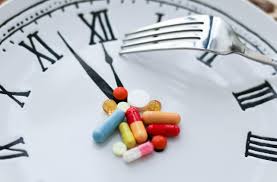
- Regularly check your blood sugar levels as your doctor recommends.
- Watch for signs of liver problems and tell your doctor if you experience symptoms like fatigue, jaundice, or dark urine.
Ultimately, clear communication with your doctor will help you stay on track and avoid preventable complications.
Special Administration Considerations
Administration to Elderly
Age-Related Dosage Considerations
As people get older, their kidney function may decline, which should be considered when prescribing medication. While vildagliptin doesn't usually require a dosage change based just on age, it's a good idea to lower the dose if a patient has kidney problems. Regular lab tests are recommended to ensure the safe use of this medication in older adults.
Safety and Tolerability Profile
Clinical trials have found that older adults generally tolerate vildagliptin as well as younger people. However, it's important to be cautious about the risk of low blood sugar (hypoglycemia), especially when taking vildagliptin with sulfonylureas or insulin. Regular check-ups can help ensure safety during long-term treatment.
Administration to Pregnant Women and Nursing Mothers
Pregnancy Category and Safety Data
It's generally recommended to avoid using vildagliptin during pregnancy because there is not enough data from controlled human studies to prove its safety. Animal studies have suggested potential risks to the fetus. Therefore, this medication should only be used if the potential benefits to the mother are much greater than any possible harm to the baby. For managing diabetes during pregnancy, insulin remains the preferred and safest treatment option.

Recommendations for Breastfeeding Women
It is not yet known whether vildagliptin can pass into human breast milk or what its effects on an infant would be. Because of this lack of safety information, nursing mothers are generally advised not to use this medication. If the treatment is absolutely necessary for the mother, alternative feeding methods for the baby should be considered to prevent any potential exposure to the drug.
Administration to Children
Lack of Established Safety and Efficacy
The safety and effectiveness of vildagliptin in children have not yet been proven. Because clinical trials have only been conducted in adults, the drug is only approved for adult use. For this reason, it is uncommon to prescribe vildagliptin to younger patients, as there is not enough data to support its use in this age group.
Current Guideline Recommendations
International guidelines currently recommend against using vildagliptin in children and teenagers, except for those in clinical trials. For young people with Type 2 diabetes, the priority is lifestyle changes, followed by medications like metformin and, in some cases, insulin. Vildagliptin should not be prescribed for routine care until more research is available to determine if these types of treatments are safe and effective for this age group.
Overdosage and Handling Precautions
Symptoms of Overdose
It's rare to overdose on vildagliptin, but it's important to be aware of the signs, as symptoms can start subtly and get worse over time.
Signs of an overdose can include:
- Stomach discomfort, such as nausea, vomiting, and abdominal pain.
- Neurological issues, including dizziness, confusion, sleepiness, and even seizures.
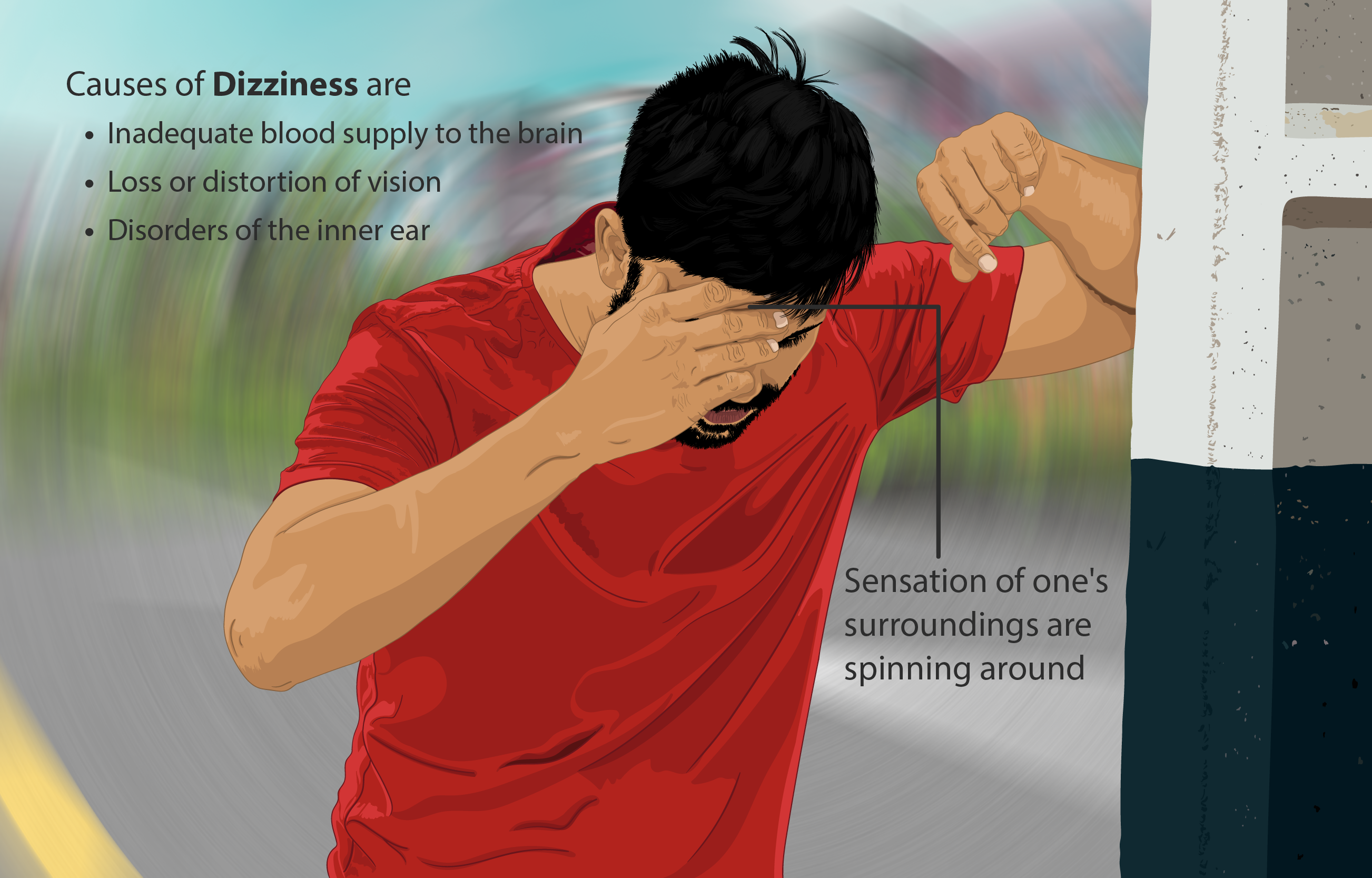
- General feelings of weakness, fatigue, or feeling unwell.
- Low blood sugar symptoms (if also taking insulin or sulfonylureas), such as sweating, trembling, heart palpitations, and pale skin.
The severity of an overdose can be worse in older adults or people with existing health issues, especially kidney or liver problems.
Emergency Management and Supportive Care
If someone has overdosed on this medication, the first step is to stabilize them immediately. Focus on keeping their airway clear, supporting their circulation, and checking their blood sugar quickly.
- If low blood sugar is confirmed or suspected, give them a fast-acting glucose source by mouth if they're awake. If they're not, administer intravenous (IV) dextrose.
- Monitor their heart and brain function continuously until their blood sugar and clinical condition are stable.
- If they took a large amount of the drug recently and their airway is protected, doctors may consider using activated charcoal to prevent further absorption.
- Regular lab tests will be done to check their electrolytes, liver function, and kidney function.
There is no specific antidote, and dialysis is not very effective. Treatment is focused on supportive care and managing the patient's symptoms. It's a good idea to contact a toxicologist or a poison control center as early as possible.
Handling Instructions for Tablets
When handling the tablets, use dry hands and keep them in their original blister pack until you're ready to take a dose. Do not crush or split the pills unless your doctor has specifically instructed you to.
Swallow the tablet whole with water, and you can take it with or without food. To make sure the medication remains effective, store it away from excessive heat, light, and humidity. Also, never transfer the tablets into an unlabeled container.
Disposal Recommendations
To get rid of unused or expired tablets, use a pharmacy take-back program if one is available.
If you must throw them away at home, follow these steps:
- Mix the tablets (keep them whole, don't crush them) with an unappealing substance, like used coffee grounds or cat litter.
- Place the mixture in a sturdy, sealed container before putting it in the trash.
- Remember to remove or completely hide any personal information on the prescription label.
Vildagliptin Side Effects
Common Side Effects
Headache
Any discomfort you feel is usually mild and temporary. To help reduce it, be sure to stay hydrated and eat regular meals. You can also consider taking a pain reliever, but only if it fits with your overall treatment plan.
Dizziness
You may feel briefly lightheaded, especially when you first start taking this medication. To avoid this, be sure to stand up slowly after sitting or lying down. If the lightheadedness continues, you should be checked for low blood sugar or side effects from other medications you're taking.

Gastrointestinal Symptoms (Nausea, Constipation, Abdominal Pain)
Stomach problems usually go away on their own. To help with them, you can:
- Eat small, frequent meals and avoid foods that are high in fat, which can make indigestion worse.
- Get enough fiber and fluids to help with constipation.
- If you experience worsening stomach pain, especially if it spreads to your back or is accompanied by vomiting, report it to your doctor immediately.
Fatigue
Feeling tired or weak is a non-specific but reported side effect. If these feelings don't go away, you should be evaluated for blood sugar fluctuations, anemia, thyroid problems, or drug interactions.

Rare but Serious Side Effects
Pancreatitis Risk
Although rare, acute pancreatitis is a serious side effect. Watch out for a sudden, severe pain in your upper abdomen that often spreads to your back, along with persistent nausea and vomiting.
If you suspect pancreatitis, stop taking vildagliptin immediately and seek urgent medical help. Your doctor will likely perform a blood test and imaging to check for it.
Liver Enzyme Abnormalities
You might experience an increase in your liver enzyme levels (ALT/AST) without any symptoms. While rare, a more serious liver injury could occur, which would require you to stop taking the medication immediately.
If you have risk factors for liver problems, it's a good idea to have your liver function checked with blood tests before you start the medication and periodically afterward. Tell your doctor right away if you notice any symptoms like jaundice (yellowing of the skin), dark urine, severe fatigue, or pain in the upper right side of your abdomen.
Hypoglycemia (Particularly in Combination Therapy)
Taking this medication by itself rarely causes low blood sugar (hypoglycemia). However, the risk increases significantly if you are also taking insulin or a sulfonylurea.
To help prevent this, you should:
- Eat regular meals.
- Always carry fast-acting carbohydrates (like glucose tablets or juice).
- Know the early warning signs of low blood sugar, such as trembling, sweating, a fast heartbeat, hunger, or confusion.
- If you have frequent low blood sugar events, your doctor may need to reduce the dose of your other medication.
Skin Hypersensitivity Reactions
Some people may experience an allergic skin reaction, such as a rash, hives, or itching. A more serious, but rare, side effect is angioedema (swelling beneath the skin), and this risk is higher if you are also taking an ACE inhibitor.
If you develop a widespread rash, have swelling in your face, or a reaction in your mouth or on other moist skin, stop taking the medication immediately and get medical help. Be sure to tell your doctor about the reaction so they can choose a different medication for you in the future.
Drug Interactions
Interactions with Metformin
Combining vildagliptin and metformin is a well-established and safe treatment option. They work together effectively because they each target a different aspect of blood sugar control: metformin reduces the amount of glucose your liver produces, while vildagliptin boosts the body's insulin secretion.
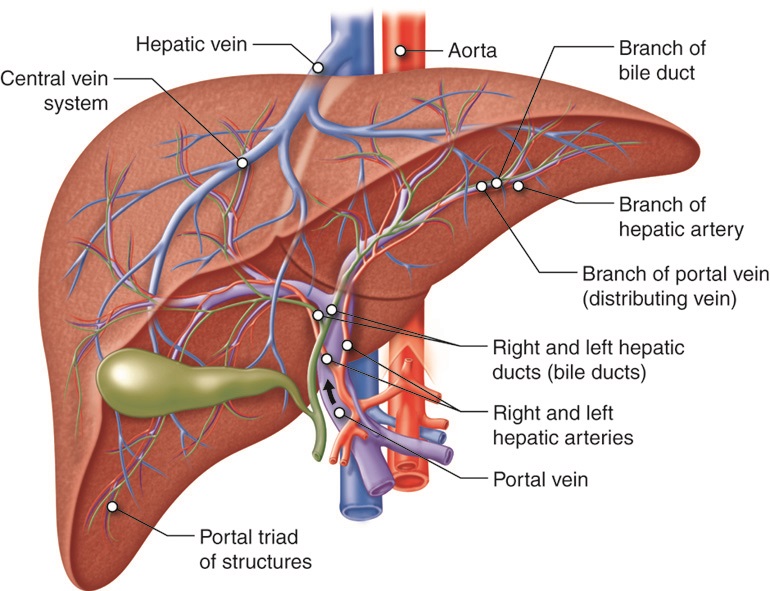
There are no known negative drug interactions between them. However, some people might experience digestive discomfort, which may require adjusting the dosage to improve tolerance
Interactions with Sulfonylureas
Combining vildagliptin with a sulfonylurea significantly increases the risk of low blood sugar (hypoglycemia). This happens because both medications work to boost insulin release.
To lower this risk, doctors often need to reduce the dose of the sulfonylurea. It's also crucial for patients to regularly check their blood sugar—both when fasting and after meals—and to be well-informed on how to recognize the symptoms of hypoglycemia.
Interactions with Insulin
Combining vildagliptin with insulin can greatly improve blood sugar control, but it also significantly raises the risk of low blood sugar (hypoglycemia). The main benefits of this approach are being able to reduce your overall insulin dose and better stabilize blood sugar levels.
To avoid symptomatic hypoglycemia, your doctor will need to carefully adjust your insulin and vildagliptin doses. It's also essential to monitor your blood glucose regularly.
Vildagliptin/Metformin
The fixed-dose combination of vildagliptin and metformin is a key treatment for type 2 diabetes. The two drugs work together to lower HbA1c more effectively and with fewer side effects than taking a high dose of either one alone.
Even though this combination is generally well-tolerated, it's important to regularly check kidney function. This is because the body clears metformin through the kidneys, and poor kidney function can increase the risk of a serious side effect called lactic acidosis.
Interaction with Other Oral Antidiabetic Drugs
Combining vildagliptin with other diabetes medications like thiazolidinediones, alpha-glucosidase inhibitors, and SGLT2 inhibitors can be helpful, as they work together to improve blood sugar control. However, adding multiple drugs to your regimen requires careful planning by your doctor to prevent low blood sugar and stomach side effects.
It is important to avoid using a fixed-dose combination of these drugs unless your doctor has already confirmed that you tolerate each medication well on its own.
Potential Interactions with Antihypertensives and Statins
Vildagliptin doesn't have any major interactions with common blood pressure medications or statins. However, you should still be cautious:
- Beta-blockers can hide the typical symptoms of low blood sugar, like a fast heartbeat or trembling.
- ACE inhibitors can, in rare cases, increase the risk of angioedema (swelling beneath the skin).
- If you are also taking statins, your doctor may want to monitor your liver function, as both medications can affect the liver.
Contraindications
Hypersensitivity to Vildagliptin
If you have ever had a reaction to vildagliptin or any of its ingredients, you should not take the medication again. This is because there's a risk of severe side effects like skin reactions or angioedema (swelling beneath the skin), which are considered absolute contraindications for its use.
Severe Hepatic Impairment
You should avoid using vildagliptin in people with liver problems, as it can build up in the body and increase the risk of liver-related side effects. To avoid this, it's crucial to check a patient's liver function before and during treatment.
History of Pancreatitis
Patients who have experienced chronic pancreatitis should steer clear of vildagliptin due, to its association, with pancreatitis as reported with DPP‐IV inhibitors; it is advisable to opt for treatments to reduce the likelihood of a recurrence happening again.
Severe Renal Dysfunction (Specific Thresholds)
Avoid using this medication if you have severe kidney impairment, defined as an eGFR below 30 mL/min/1.73 m². In these cases, your kidneys can't properly clear the drug, which increases your risk of side effects. It's best to consider alternative medications that are safer for people with kidney issues.
Warnings and Precautions
Risk of Liver Enzyme Elevation
Increases in liver enzymes, specifically ALT and AST, have been noted in some patients. While these changes often don't cause any symptoms, routine liver function tests are needed to prevent the development of serious liver damage.
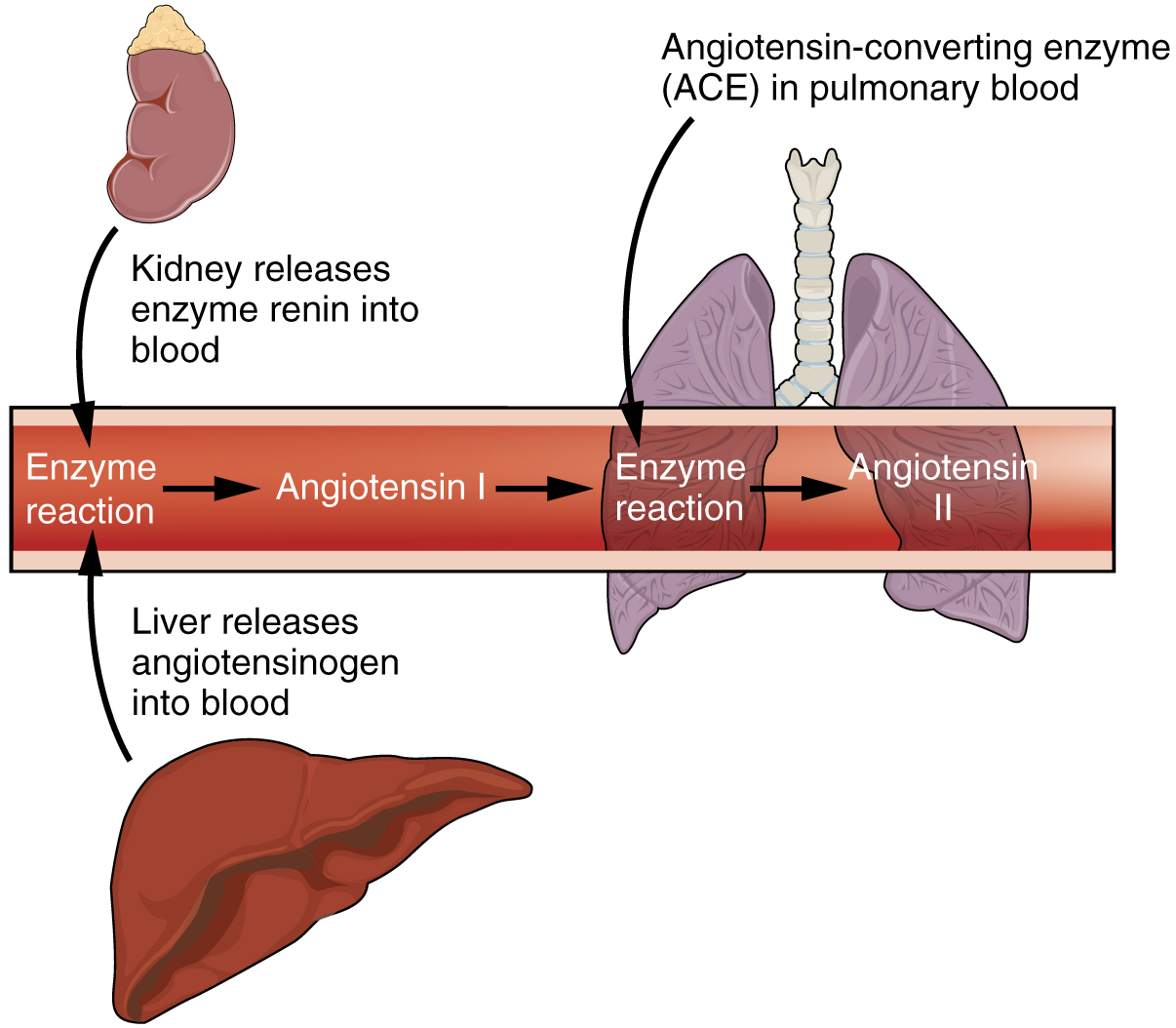
Monitoring Requirements for Hepatic Function
Before starting treatment, your liver enzyme levels should be checked. This monitoring should continue every three months for the first year, and periodically after that. If your liver enzyme levels consistently rise to more than three times the normal limit, the treatment should be stopped
Risk of Pancreatitis and Symptom Awareness
Although rare, acute pancreatitis is a serious risk that you should be aware of. Watch for symptoms like severe abdominal pain that spreads to your back, along with nausea and vomiting. If you suspect these symptoms, you must stop taking the medication immediately and seek medical help.
Use in Patients with Cardiovascular Disease
While vildagliptin doesn't directly affect the heart, patients with existing heart conditions should be monitored for any potential issues with their blood sugar levels and for signs of ischemic events (reduced blood flow to the heart), especially when using it in combination with other medications. It is important to carefully consider a patient's heart health when personalizing their treatment.
Hypoglycemia Risk in Combination Therapies
When you combine vildagliptin with insulin or a sulfonylurea, the risk of low blood sugar (hypoglycemia) increases significantly.
To help prevent this, you should take a lower dose of the other medication, eat regular meals, and check your blood sugar often. It is also essential to know the symptoms of low blood sugar so you can act quickly.
Careful Administration
Patients with Mild to Moderate Renal Impairment
For patients with reduced kidney function, it's important to adjust the dose of vildagliptin (Zomelis) to prevent the medication from building up in the body. Since the kidneys help remove vildagliptin, your doctor should check your kidney function before you start treatment and continue to monitor it. For those with mild to moderate kidney problems, a lower dose might be all that's needed to control blood sugar while keeping the risk of side effects low.
Patients with Mild Hepatic Impairment
While Zomelis should not be used in people with severe liver problems, it may be an option for those with mild liver dysfunction if they are closely monitored. It is crucial to regularly check liver enzymes. If you experience persistent increases in these enzymes or develop symptoms like jaundice or unexplained fatigue, your doctor will need to re-evaluate the treatment and may decide to stop the medication.
Patients on Concomitant Antidiabetic Therapy
When using Zomelis along with metformin or insulin or sulfonylureas to improve blood sugar control, however these combinations do bring a risk of hypoglycemia. It is important to take steps to mitigate this risk;
- Dosages of insulin or sulfonyureas may require a decrease.
- Regularly checking your blood sugar levels is advised.
- Patients ought to receive guidance on recognizing and handling hypoglycemia.
Monitoring Parameters for Long-Term Use
If you're taking Zomelis long-term, your doctor will need to monitor your health regularly. This includes:
- Kidney function tests every 6 to 12 months (or more often if you're at risk).
- Liver function tests before you start the medication and periodically during treatment.
- HbA1c tests every three months to check how well your blood sugar is controlled.
- Keeping an eye out for early signs of pancreatitis, such as severe stomach pain.
Important Precautions for Patients
Lifestyle and Dietary Considerations
For the best results with Zomelis, it's important to combine the medication with a healthy lifestyle. This means sticking to a balanced diet of whole grains, lean proteins, and high-fiber foods, while limiting sugary and fatty foods. Regular physical activity also helps your body use insulin more effectively, which makes the medication work even better.
Importance of Regular Blood Glucose Monitoring
Regularly checking your blood sugar is key to managing your diabetes. By measuring both your fasting and after-meal glucose levels, you can see how stable your blood sugar is. This information helps you and your doctor make smart adjustments to your meal plan and spot potential problems early on, before they can lead to complications.
Avoiding Alcohol Consumption
Drinking alcohol can change how your body handles glucose and can affect people taking Zomelis. If you're on this medication, you should be careful with alcohol, as it could increase your risk of both low blood sugar and liver problems. It's best to either avoid alcohol completely or limit your intake significantly to protect your health and safety.
Signs and Symptoms That Require Medical Attention
You should seek immediate medical care if you experience any of the following symptoms:
- Severe abdominal pain that spreads to your back: This could be a sign of pancreatitis.
- Yellowing of your skin or the whites of your eyes: This can indicate liver problems.
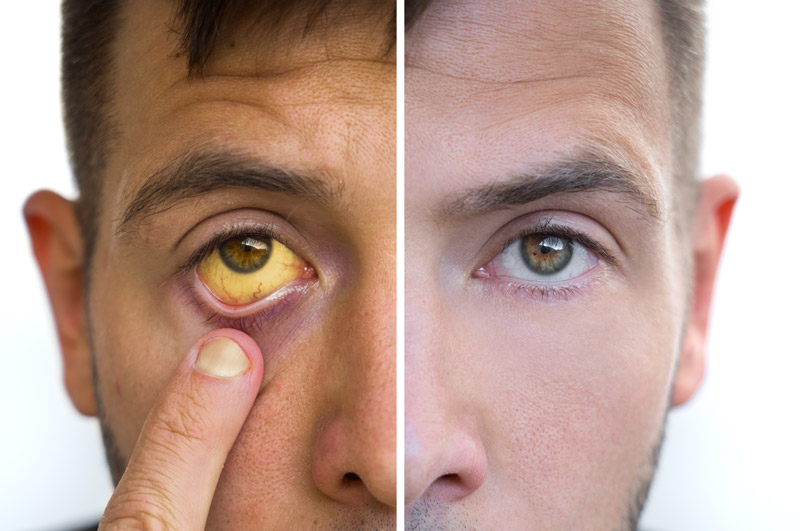
- Persistent nausea, unexplained fatigue, or dark urine: These are also signs of potential liver issues.
- Dizziness, confusion, or excessive sweating: These symptoms could mean you are experiencing hypoglycemia (low blood sugar).
Storage and Stability
Recommended Storage Conditions
You should store Zomelis tablets at a controlled room temperature, typically between 20°C and 25°C. This helps keep the medication stable by protecting it from moisture and direct sunlight.
Shelf Life of Zomelis Tablets
Every package of this medication has an expiration date. This date tells you when the drug may no longer be effective or safe to use. Always check the packaging and be sure to properly dispose of any expired medication to ensure your treatment is both safe and effective.
Guidance for Traveling with Medication
When you travel, keep your tablets in their original packaging with the prescription labels attached. It's best to pack your medication in your carry-on luggage so it isn't exposed to extreme temperatures in the cargo hold. Also, be sure to bring enough medication for your entire trip, plus some extra in case of travel delays.
Instructions for Maintaining Efficacy
Don't transfer your Zomelis tablets into other containers. Exposing the pills to air and moisture can make them less effective over time. Always leave the tablets in their original blister pack and only open one right before you take your dose. This will help ensure the medication works as it should throughout your treatment.
Zomelis, Vildagliptin FAQ
- Are Vildagliptin and Sitagliptin the same?
- What are Vildagliptin tablets used for?
- Can Vildagliptin and Teneligliptin be taken together?
- Can Vildagliptin cause hypoglycemia?
- Can Vildagliptin and Dapagliflozin be taken together?
- Can Vildagliptin cause weight loss?
- Can Vildagliptin cause pancreatitis?
- Can Vildagliptin and Metformin be taken together?
- Can Vildagliptin be crushed?
- Can Vildagliptin and Gliclazide be taken together?
- Can Vildagliptin be taken twice a day?
- Can Vildagliptin be taken without metformin?
- Can Vildagliptin cause uti?
- Can Vildagliptin be taken without food?
- Can Vildagliptin cause hyponatremia?
- Can Vildagliptin be taken at night?
- How Vildagliptin works?
- How is Vildagliptin better than Sitagliptin?
- How is Vildagliptin better than metformin?
- Vildagliptin how to take?
- Vildagliptin how does it work?
- Vildagliptin how many times a day?
- How does Vildagliptin work in diabetes?
- How quickly does Vildagliptin work?
- Vildagliptin what is it used for?
- Vildagliptin what does it do?
- What is Vildagliptin tablets used for?
- What is Vildagliptin and Metformin hydrochloride used for?
- What is Vildagliptin and Metformin?
- What does Vildagliptin treat?
- When is Vildagliptin prescribed?
- Vildagliptin when to take?
- When to stop Vildagliptin?
- Vildagliptin which class of drug?
- Vildagliptin which group of drug?
- Which is better Vildagliptin vs Glimepiride?
- Which is better Vildagliptin or Sitagliptin?
- Which is better Vildagliptin vs Metformin?
- Which is better Vildagliptin or Teneligliptin?
- Which is better Vildagliptin or Linagliptin?
- Which is safer Vildagliptin or Sitagliptin?
- Which is better Vildagliptin or Glimepiride?
- Which is better Vildagliptin or Dapagliflozin?
- Which is better Vildagliptin or Empagliflozin?
- Which is better Vildagliptin or Gliclazide?
- Why is Vildagliptin combined with Metformin?
- Why is Vildagliptin prescribed?
- Why Vildagliptin is better than Teneligliptin?
- Can Vildagliptin and Gliclazide be taken together?
- Can Vildagliptin and Teneligliptin be taken together?
- Can Vildagliptin and Metformin be taken together?
- Can Vildagliptin cause pancreatitis?
- Can Vildagliptin and Dapagliflozin be taken together?
- Can Vildagliptin be taken twice a day?
- Can Vildagliptin cause weight loss?
- Can Vildagliptin be taken without Metformin?
- Can Vildagliptin cause uti?
- Can Vildagliptin be taken without food?
- Can Vildagliptin cause hyponatremia?
- Vildagliptin for weight loss?
- Vildagliptin for prediabetes?
- Vildagliptin for heart failure?
- Vildagliptin for kidney?
- Vildagliptin for insulin resistance?
- Vildagliptin for esrd?
- Vildagliptin for pregnancy?
- Is Vildagliptin and Sitagliptin same?
- Is Vildagliptin safe for kidneys?
- Is Vildagliptin better than Metformin?
- Is Vildagliptin good for diabetes?
- Is Vildagliptin safe?
- Is Vildagliptin a sulfonylurea?
- Is Vildagliptin safe in pregnancy?
Are Vildagliptin and Sitagliptin the same?
Both Vildagliptin and Sitagliptin fall under the category of DPP-4 inhibitors, for treating diabetes; however, they vary in their chemical composition and dosage despite having a mechanism of action and certain pharmacological traits.
What are Vildagliptin tablets used for?
The tablets called Vildagliptin are utilized for controlling type 2 diabetes by enhancing regulation through boosting incretin hormone levels that aid in insulin and glucagon secretion modulation.
Can Vildagliptin and Teneligliptin be taken together?
It is not recommended to take Vildagliptin and Teneligliptin since they are both classified as DPP-4 inhibitor drugs belonging to the group of medications known as incretin therapies; combining them does not yield any extra advantages and raises the likelihood of experiencing negative side effects due to their interaction with each other.
Can Vildagliptin cause hypoglycemia?
The occurrence of hypoglycemia is uncommon when using vildagliptin by itself; however, the likelihood rises when vildagliptin is taken alongside drugs, like sulfonylurea or insulin.
Can Vildagliptin and Dapagliflozin be taken together?
It's possible to prescribe Vildagliptin and Dapagliflozin for treating type 2 diabetes as they work on distinct mechanisms that can enhance the management of blood sugar levels.
Can Vildagliptin cause weight loss?
The general consensus is that Vildagliptin does not significantly impact weight gain or loss for individuals who take it; however, a few patients may notice weight reduction while using the medication due to factors other than its primary effects on the body.
Can Vildagliptin cause pancreatitis?
Rare instances of pancreatitis have been linked to the use of Vildagliptin medication, and individuals facing pain should promptly consult a healthcare professional for assistance.
Can Vildagliptin and Metformin be taken together?
Can Vildagliptin be crushed?
It is typically recommended to swallow Vildagliptin tablets rather than crushing them unless specifically instructed by a healthcare professional.
Can Vildagliptin and Gliclazide be taken together?
When Vildagliptin and Glicladize are combined in a prescription regimen, caution should be taken due to a risk of hypoglycemia associated with the use of sulfonylureas.
Can Vildagliptin be taken twice a day?
Vildagliptin is often recommended at a dosage of 50 mg twice a day based on the requirements of the treatment, for each person.
Can Vildagliptin be taken without metformin?
Vildagliptin is an option for individuals who cannot tolerate Metformin or for those for whom Metformin is not suitable to use as a treatment method.
Can Vildagliptin cause uti?
The connection between Vildagliptin and urinary tract infections is not as pronounced compared with SGLT-2 inhibitors, like Dapagliflozin are often connected with UTIs frequently.
Can Vildagliptin be taken without food?
Vildagliptin can be consumed with or without food since its absorption is not greatly impacted by food intake.
Can Vildagliptin cause hyponatremia?
Hyponatremia is not an occurrence linked to Vildagliptin side effects; nonetheless it should be overseen in individuals taking medications that impact electrolyte levels.
Can Vildagliptin be taken at night?
Vildagliptin is suitable for evening intake as long as it is taken consistently at the same time every day.
How Vildagliptin works?
The mechanism of action for Vildagliptin involves blocking the DPP‐4 enzyme to enhance incretin hormone levels leading to increased insulin secretion and reduced glucagon release in response to glucose levels in the body.
How is Vildagliptin better than Sitagliptin?
Both Vildagliptin and Sitagliptin show effectiveness; however some research indicates that Vildagliptin might provide tolerance for gastrointestinal side effects compared to Sitagliptin. The decision on which to prescribe hinges on the patient's profile and the doctor's preference.
How is Vildagliptin better than metformin?
In practice, it is commonly acknowledged that Metformin is the initial treatment option over Vildagliptin; however, Vildagliptin may be prescribed in conjunction with Metformin if Metformin alone proves to be ineffective or unsuitable for the patient's condition.
Vildagliptin how to take?
When using Vildagliptin medication, it is usually recommended to take either 50 mg twice daily. You may take it with or without food as advised by your healthcare provider. It is important to adjust the dosage based on guidance. How your body responds to the treatment.
Vildagliptin how does it work?
The medication Vildagliptin functions by blocking the enzyme known as dipeptidyl peptidase 4 (DPP‑4), leading to levels of hormones in the body that trigger insulin production and curb glucagon release based on glucose levels to manage blood sugar levels effectively.
Vildagliptin how many times a day?
The typical dosage of Vildagliptin is to be taken twice at 50 mg each time according to the doctors instructions, for the treatment regimen.
How does Vildagliptin work in diabetes?
Vildagliptin in diabetes aids in enhancing blood sugar control by boosting the body's insulin production post-meals and decreasing the liver's surplus glucose output.
How quickly does Vildagliptin work?
The effects of Vildagliptin start to show shortly after it is taken; however significant changes, in regulating blood sugar usually become apparent after a days or weeks of use.
Vildagliptin what is it used for?
The medication Vildagliptin is prescribed to help control blood sugar levels in individuals with type 2 diabetes either alone or alongside diabetes medications to enhance management of the condition.
Vildagliptin what does it do?
In order to lower blood sugar levels effectively and maintain balance in the body's glucose levels vildagliptin works by boosting insulin production during glucose levels and decreasing the secretion of glucagon to prevent overproduction of sugar by the liver.
What is Vildagliptin tablets used for?
The tablets of Vildagliptin are prescribed for managing type 2 diabetes by stabilizing blood sugar levels and minimizing diabetes related issues.
What is Vildagliptin and Metformin hydrochloride used for?
The blend of Vildagliptin and Metformin hydrochloride is prescribed for individuals with type 2 diabetes requiring two treatment regimens; Vildagliptin enhances function and Metformin diminishes hepatic glucose output while enhancing insulin responsiveness.
What is Vildagliptin and Metformin?
The combination of Vildagliptin and Metformin, in a fixed dose form is designed to address pathways enhancing the management of blood sugar levels in individuals, with type 2 diabetes.
What does Vildagliptin treat?
The treatment of type 2 diabetes mellitus involves the usage of Vildagliptin to enhance control over blood sugar levels and minimize the risks linked to glucose levels over time.
When is Vildagliptin prescribed?
When lifestyle changes and initial medications such as Metformin are not enough or cannot be used for a patient's condition vildagliptin may be recommended as part of the treatment plan.
Vildagliptin when to take?
You can take Vildagliptin with or without food either once or twice a day at times every day to control your blood sugar effectively.
When to stop Vildagliptin?
Vildagliptin which class of drug?
Vildagliptin belongs to the class of drugs known as dipeptidyl peptidase-4 (DPP-4) inhibitors.
Vildagliptin which group of drug?
Within the category of medications Vildagliptin is designed to focus on regulating incretin hormones specifically.
Which is better Vildagliptin vs Glimepiride?
When it comes to choosing between Vildagliptin and Glimepiride for managing blood sugar levels in patients, with diabetes there are a factors to consider; Vildagliptin is associated with a likelihood of hypoglycemia and weight gain than Glimepiride; however Glimepiride might be more effective, in lowering blood glucose levels depending on the individual needs of the patient.
Which is better Vildagliptin or Sitagliptin?
While both vildagliptin and sitagliptin are equally effective at lowering blood sugar, they differ slightly in how well patients tolerate them and how the body processes them. When choosing between the two, doctors consider factors like cost, accessibility, and a patient's individual tolerance to the medication.
Which is better Vildagliptin vs Metformin?
Metformin is often the choice, for treatment. Is typically more effective when used initially while Vildagliptin is utilized if Metformin proves inadequate or is not recommended.
Which is better Vildagliptin or Teneligliptin?
Both Vildagliptin and Teneligliptin are part of the group of medications known as the class of drugs called the dipeptidyl peptidase inhibitors (DPP‐IV inhibitors). They show a very close level of effectiveness, in treatment outcomes according to current research findings.
Which is better Vildagliptin or Linagliptin?
Linagliptin and Vildagliptin have effectiveness; however Linagliptin is generally favored among patients, with kidney issues as it does not necessitate dosage adjustments.
Which is safer Vildagliptin or Sitagliptin?
Both medications are generally considered safe; however Sitagliptin has an history of long term safety data compared to Vildagliptin which is also well tolerated by patients, with minimal safety differences that may vary depending upon the individuals circumstances.
Which is better Vildagliptin or Glimepiride?
When comparing vildagliptin and glimepiride, both medications are effective at lowering blood sugar, but they differ in their side effects. Vildagliptin is considered safer because it carries a lower risk of causing low blood sugar episodes and weight gain. Glimepiride, while very potent at lowering glucose, has a higher chance of causing both.
Which is better Vildagliptin or Dapagliflozin?
While both medications help manage blood sugar, they work in different ways. Vildagliptin acts on the body's hormones to control glucose levels. In contrast, dapagliflozin lowers blood sugar by causing the body to excrete glucose through urine and may also offer additional benefits for heart and kidney health. The choice between the two depends on a patient's individual health needs.
Which is better Vildagliptin or Empagliflozin?
Empagliflozin offers benefits, for kidney health apart from managing blood sugar levels; whereas Vildagliptin is mainly used to regulate glucose levels, in the body based on a patients risk factors and treatment objectives.
Which is better Vildagliptin or Gliclazide?
Vildagliptin carries a lower risk of causing low blood sugar compared to gliclazide. While gliclazide is highly effective at lowering blood sugar, it comes with a greater chance of causing hypoglycemia.
Why is Vildagliptin combined with Metformin?
The combination of Vildagliptin and Metformin aims to address aspects of controlling glucose levels in the body. Metformin works to decrease the production of glucose by the liver while Vildagliptin boosts the effect to improve glycemic control and regulation.
Why is Vildagliptin prescribed?
Patients with type 2 diabetes may be given Vildagliptin when lifestyle changes or initial treatments are not sufficient to control blood sugar levels and prevent diabetes related complications in the term.
Why Vildagliptin is better than Teneligliptin?
Both vildagliptin and teneligliptin are similarly effective. However, vildagliptin is often preferred because it has been used longer around the world, providing more extensive safety data, especially for patients with heart or kidney issues.
Can Vildagliptin and Gliclazide be taken together?
Vildagliptin and Glicazide are often prescribed in conjunction, for type 2 diabetes; however it is essential to monitor due, to the risk of hypoglycemia associated with Glicazide.
Can Vildagliptin and Teneligliptin be taken together?
Vildagliptin and Teneligliptin should not be taken simultaneously as they are both classified as inhibitors; combining them does not provide any advantages and may increase potential risks.
Can Vildagliptin and Metformin be taken together?
Vildagliptin and Metformin are often prescribed together for their combined benefits, in regulating blood sugar levels as part of a treatment plan that many doctors recommend to patients, with diabetes.
Can Vildagliptin cause pancreatitis?
The connection, between Vildagliptin and pancreatitis is rare but noteworthy; individuals experiencing discomfort should seek prompt evaluation and should discontinue medication if pancreatitis is suspected.
Can Vildagliptin and Dapagliflozin be taken together?
Combining Vildagliptin and Dapagliflozin can improve blood sugar control as they work in ways and are often prescribed for patients requiring two medications to manage their condition.
Can Vildagliptin be taken twice a day?
Vildagliptin is often recommended in doses of 50 mg twice a day based on the patients treatment needs.
Can Vildagliptin cause weight loss?
Can Vildagliptin be taken without Metformin?
Vildagliptin can be given alone to patients who can't handle Metformin or when Metformin is not recommended for them.
Can Vildagliptin cause uti?
The connection, between vildagliptin and urinary tract infections is not as significant compared with SGLTL inhibitors such, as dapaliflozin, which are frequently associated with infections.
Can Vildagliptin be taken without food?
You can take Vildagliptin with or, without food since its absorption isn't greatly influenced by meals.
Can Vildagliptin cause hyponatremia?
Hyponatremia is not typically listed as a side effect of Vildagliptin. Its important to consider monitoring if the patient is taking other medications that can impact sodium levels.
Vildagliptin for weight loss?
The use of Vildagliptin is not recommended for weight loss; although it might assist individuals in managing or slightly decreasing weight levels, it's main purpose lies in regulating blood sugar for patients.
Vildagliptin for prediabetes?
Doctors usually don't prescribe Vildagliptin for prediabetes patients; they tend to suggest lifestyle changes and Metformin in those situations.
Vildagliptin for heart failure?
Exercise caution when using Vildagliptin in individuals with heart failure as types of medication like the ones in the category of "DPP-4 inhibitors" can potentially exacerbate heart failure conditions; therefore, it is crucial to assess risks carefully before proceeding with treatment.
Vildagliptin for kidney?
Patients, with mild to kidney issues can take Vildagliptin with dosage modifications if needed;. For those, with severe kidney problems extra monitoring is necessary.
Vildagliptin for insulin resistance?
The medication Vildagliptin works to enhance activity, which indirectly aids in improving insulin response; however it is not primarily categorized as an insulin-sensitizing drug.
Vildagliptin for esrd?
It's usually advised to avoid using Vildagliptin in individuals with end-stage disease (ESRD). It might be safer to consider medications for these patients.
Vildagliptin for pregnancy?
It's generally advised to avoid using Vildagliptin during pregnancy because there isn't safety data for it in that context; instead insulin is the preferred option for managing blood sugar levels in pregnant women.
Is Vildagliptin and Sitagliptin same?
Vildagliptin and Sitagliptin are not the same drug even though they both fall under the category of DPP‐4 inhibitors; their distinctions lie in their chemical compositions and dosages well as certain pharmacological traits that set them apart from each other.
Is Vildagliptin safe for kidneys?
Patients with regular or slightly decreased kidney function can safely use Vildagliptin medication without any concerns; in cases of impairment, some dosage adjustments may be necessary and extra caution is advised for individuals with severe kidney disease.
Is Vildagliptin better than Metformin?
Metformin continues to be the treatment for type 2 diabetes because of its results and established long-term advantages; Vildagliptin is commonly introduced when Metformin alone proves insufficient."
Is Vildagliptin good for diabetes?
Yes Vildagliptin works in controlling type 2 diabetes by enhancing blood sugar regulation especially when used along with antidiabetic medications.
Is Vildagliptin safe?
The safety and tolerability of Vildagliptin is usually good, with significant side effects, like pancreatitis or liver issues that need to be monitored.
Is Vildagliptin a sulfonylurea?
Is Vildagliptin safe in pregnancy?
During pregnancy its recommended to avoid using Vildagliptin due, to data on its safety in such cases; instead insulin is the preferred option, for managing diabetes during pregnancy.

